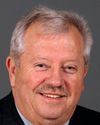Thank you, Mr. Chairman.
Bonjour. I am Kevin McGarr, president and CEO of CATSA. Joining me today is Ron McAdam, CATSA's general manager of new technology. We are pleased to be invited here today to speak with you and to answer any questions you may have.
The attempted bombing incident at Christmas is a stark reminder of how the events of 9/11 created an unprecedented global awareness of the link between air travel and terrorism. In Canada, this attempted attack on our close neighbour underlined the need for continued vigilance on our own home front.
Since 9/11, CATSA has been working to protect the public by securing critical elements of the air transportation system. As outlined in the CATSA act, we do this by delivering effective, efficient, and consistent security screening services that are in the public interest.
The December 25 incident, along with other recent acts at attempted terrorism, serve to remind all of us of the importance of aviation security and the continuous need for vigilance and preparedness in the face of impending threats.
I'd like to take a moment to provide you with some of the most recent advancements we have made in aviation security.
In the area of pre-board screening, we have deployed multi-view x-rays across the country, installed full body scanners in all class 1 airports, networked walk-through metal detectors in Canadian airports for data collection to help with improved passenger throughput, and hired more oversight officers to better monitor screening officer compliance and performance and ensure consistency.
For hold bag screening—that is, the checked baggage—we have been continuously evaluating the latest explosive detection equipment in a new testing facility that significantly enhances CATSA's ability to evaluate new leading-edge technology and helps us to maintain international security compatibility.
We are exploring ways to further secure the critical restricted areas in airports, including the screening of non-passengers, and are currently finishing construction of a vehicle checkpoint at Vancouver International Airport.
On a broader level, we have improved our communications with passengers through the launch of a new user-friendly website and mobile site, launched a passenger campaign based on extensive research to help target our efforts to specific types of travellers and their needs, and improved the consistency of airport signage across the country.
As I consider where we are now and our recent upcoming activities, it is not without considerable pride. In the last eight years, CATSA has undergone huge growth. We have moved from establishing operations to maintaining those operations and, more recently, to improving them. We have shifted from reacting to threats to undertaking proactive planning action, because we now have the stability and expertise in place to move in that direction.
It is a shift where our continuing efforts to use resources more efficiently will lead to better throughput of passengers; where those efficiencies, combined with improvements in customer service, will result in higher satisfaction levels among the travelling public; where better compliance with our standard operating procedures will produce consistency across the country; and where continuous efforts to strengthen our relationship with Transport Canada and our screening contractors will ensure ongoing respect, trust, and openness.
We're getting there. With the recent deployment of full-body scanners, we have added an additional layer of security that provides us with higher detection capabilities, while, at the same time, improving our customer service by giving air passengers who don't want to be physically touched during a search an alternative option.
We have also embarked on a new trusted traveller trial, Nexus, in partnership with the Canada Border Services Agency, Transport Canada and airport authorities. The Nexus program, a joint CBSA and U.S. customs border protection initiative, is designed to expedite border clearance for low risk, preapproved travellers into Canada and the U.S.
An added benefit is that, in Ottawa, Nexus card holders are now able to use a designated screening line. We are currently looking at the potential to expand this to other airports. This represents a concrete step toward risk-based screening.
Transport Canada and CATSA share the same idea that, by focusing on the higher-risk traveller, we can achieve greater efficiencies with better targeted resources.
Along those same lines, we are at the planning and development stages with our passenger behaviour observation program. It's a proactive initiative that looks at behavioural indicators to help identify deceptive activities being undertaken to circumvent security measures before any threat can be carried out. Our number one priority continues to be striking the right balance between keeping planes secure while providing the best in customer service.
Internally, we are adopting a regional model of organization to improve our service delivery and oversight. This involves bringing the people responsible for service delivery closer to front line operations and ensuring that there is flexibility to respond to local needs.
We are committed to implementing a rigorous performance measurement program to ensure that our operations are the most effective they can be. The only way to truly reach excellence in operational efficiency is by measuring how we are doing, focusing on what we do best, and fixing what we can do better.
The announcement of long-term funding for CATSA in the latest budget will go far in moving us in this direction. We can now plan and invest for the long term, maintain our core mandated activities, and improve the effectiveness and efficiency of our programs with the certainty that this investment brings.
At the same time, we will be preparing to implement the recommendations stemming from our strategic review. These include options to streamline our operations and enhance the cost-effectiveness of our activities to make the best possible use of resources afforded to us by Canadian taxpayers.
If the crisis stemming from December 25 taught us anything, it was that we as an organization need to be able to manage change better. As we take this into account and transform the way we do business, know that we are taking on this challenge openly and willingly. We are committed to change because we know that it will take us where we want to go, it is in the best interests of Canadians, and it is critical to our continued success.
Our most recent challenge—the 2010 Vancouver Olympic and Paralympic Winter Games—provided us with an opportunity to experience change on all levels as we stepped outside of our usual arena to demonstrate the best in aviation screening services to the world.
I am proud of the hard work and outstanding efforts put forth by CATSA employees, our partners in the aviation industry, and by the screening officers who worked on the front lines ensuring that all visitors who travelled by air—to and from the Games and elsewhere across Canada during this period—experienced excellence in aviation security.
CATSA will build on that momentum as we move forward with a renewed commitment to delivering world-class aviation security to Canadians in the most effective and efficient way possible.
Thank you.











